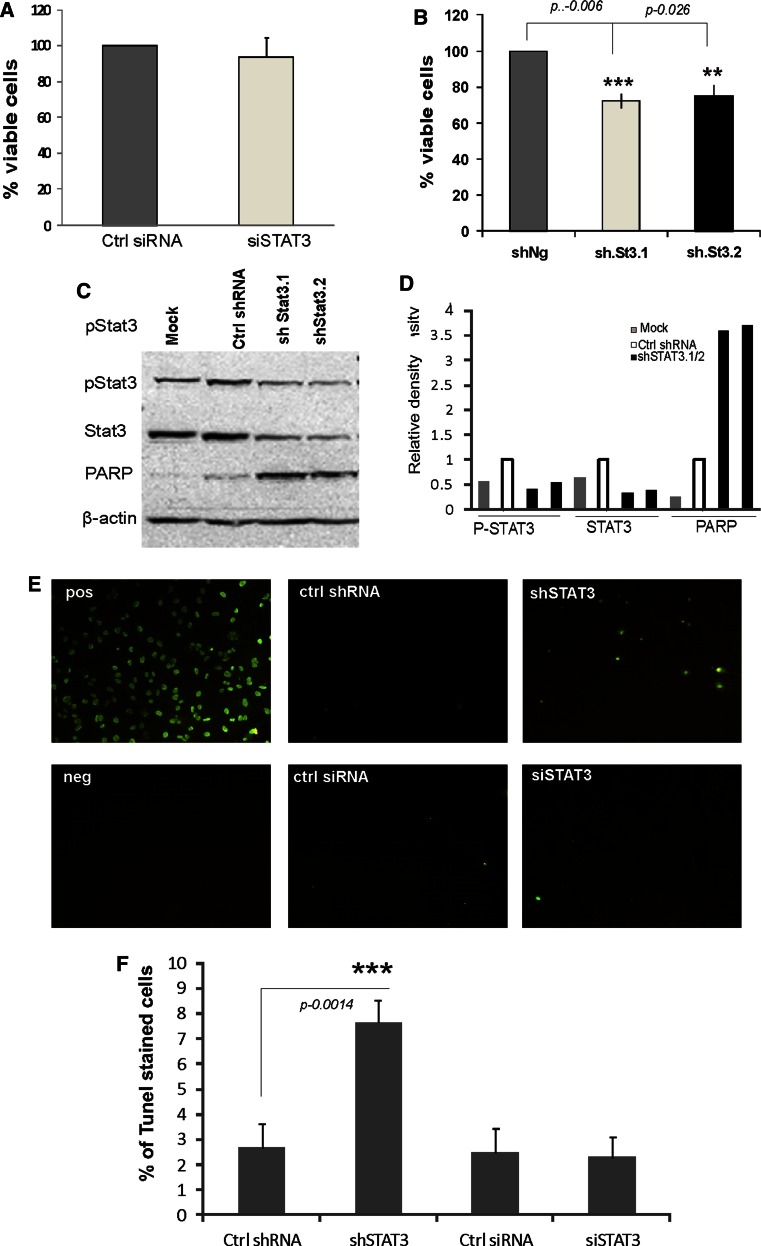Fig. 3.
STAT3 knockdown with specific shRNA, but not siRNA, reduces cell survival and induces DNA fragmentation in melanoma cells. a–b Cells (1 × 107 cells/per group) were mock transfected or were transfected with a control or STAT3 siRNA or plasmids coding for control or STAT3 specific shRNAs. Cell viability was determined using the MTT metabolism assay 48 h after the transfection of the indicated shRNA or siRNA. Measurements were related to respective controls (cells transfected with ctr siRNA or shRNA were taken as 100 %) and data represent mean ± S.D. from three experiments, each in triplicate. c STAT3 knockdown with two specific shRNAs results in induction of apoptotic cell death. The levels of phosphorylated and total STAT3 and cleaved PARP proteins in cells transfected with plasmids coding for control or STAT3 specific shRNA were examined by Western blotting. Immunoblots were re-probed with an antibody recognizing β-actin to ensure equal loading. Similar results were obtained in three independent experiments. d Quantification of the Western blots by using β-actin as the loading control using Image J. e DNA fragmentation occurs in cells transfected with STAT3 specific shRNA. TUNEL staining was performed on cells 48 h after transfection and then observed using a fluorescence microscope. TUNEL staining is shown in green. In the top right is the positive control with cells incubated with Dnase1 and the negative control below are cells labeled with Label solution (without terminal transferase). f The percentage of TUNEL-positive cells was defined as the number of TUNEL-stained cells divided by the total number of cells seen with bright field. At least 600 cells in three randomly selected fields of view from each well were counted for three independent experiments

